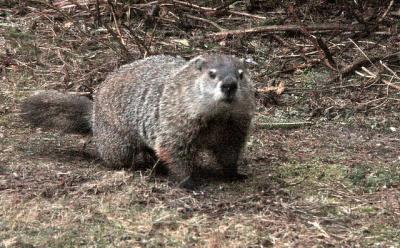Nature Notes: When Winter Never Comes

The odd winter continues. In a letter to Newsday, John Cryan of the New York State Department of Environmental Conservation and one of the original founders of the Pine Barrens Society, calls it a fifth season. It may be the most unusual winter I’ve witnessed here in my 63 years of residence on both forks. All of nature is used to a real winter, and when it never comes, the situation could become calamitous. At any rate I am extremely curious with respect to spring, Will it be a bona fide one or a second crazy season following the first crazy one?
This is the time when chipmunks and woodchucks are supposed to be hibernating. Robins are supposed to be long gone, and freshwater bodies, as well as some salt-ish ones, frozen over. Life cycles of thousands of local species including insects and green plants are genetically geared to undergo a normal winter. We humans may also be programmed to endure a cold, icy, and snowy winter. Will everything go haywire, including us?
I mentioned woodchucks, a.k.a. groundhogs. What will happen to Punxsutawney Phil and the many others in the Northeast that were ceremoniously retrieved from their burrows Tuesday and held up by a mayor or other politico for the public and news cameras? Without any winter to predict an end to, they could certainly lose their luster. Instead of being called respectfully woodchucks or groundhogs, the old name for them in farming country, “varmint,” may once again apply.
The woodchuck, one of the largest North American rodents, right up there with beavers in size and furriness, was absent from the South Fork until the middle 1990s when they began to assert themselves. No one has ever determined how they got here. They eschew water and are not great swimmers like beavers. They should be hibernating in the winter when the Shinnecock Canal and Shinnecock Bay and part of Peconic Bay are frozen over, so it is doubtful that they walked across the ice as several mammals such as caribou and coyotes do to get from one piece of land to another. It has been speculated that a nuisance trapper captured one or more in Hampton Bays and let them go east of the canal.
At any rate, the South Fork is warmer than the rest of Long Island, at least warmer than the North Fork and western and central Suffolk, where the air in the pine barrens is often 10 degrees colder than that in Sag Harbor or Montauk. Woodchucks here may not follow the hibernation rule that governs the species’ activities elsewhere. Such it is that an East Hampton Star photographer has been able to photograph the one or two that live under her porch in the yard of her East Hampton house.
Long Island is bereft of large mammals. We used to have beavers, bobcats, wolves, maybe, even bears. But now we are reduced to deer, raccoons, red and gray foxes, skunks, opossums, and woodchucks. Sorry, I forgot the coyote of the genetic hybrid coywolf that has found its way here in the last couple of years. Dell Cullum had photographed one a few years back in Bridgehampton.
Coyotes, however you refer to them, will be well established here by the end of the decade, or at least by 2030. We won’t have to fret about too many deer as we seem to do now; the coyotes will see to that. Wouldn’t it be great to have bobcats back, as well?
I’m not so sure we could handle wolves again. We particularly had to concern ourselves with the dogs kept by the South Fork’s Native Americans, which were probably much more wolf than dog.
We did have a beaver or two in the last decade, but they seem to have disappeared. And in this decade there was a skunk hanging around the Lighthouse in Montauk. One skunk or one beaver, however, does not make for a family or a population increase. The one mammal that is apparently making a comeback, not counting the three species of seals that are becoming so common here in the winter, is the otter. Mike Bottini, an inveterate biologist, hiker, and kayaker, has been plotting their comeback, up from a solitary otter or two in odd years prior to the new millennium to pairs having families today. He doesn’t have to see an otter to know one has been around; he knows their tracks and even their scat, a talent still practiced by many members of Native American tribes across America and Canada.
With respect to native mammals on the South Fork, the three newcomers are the woodchuck first, the southern flying squirrel second, and now the otter. We may not have to put a pair back in Otter Pond in Sag Harbor; they may get there on their own. Wouldn’t that be the perfect topping on the perfect pudding?
Larry Penny can be reached via email at [email protected].
